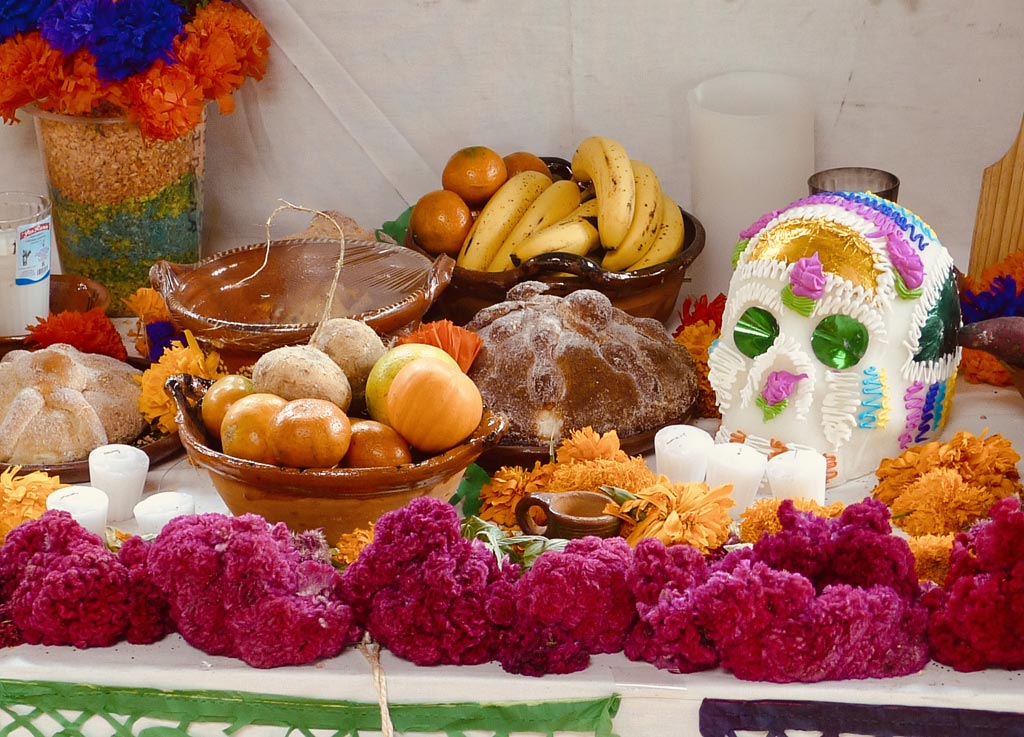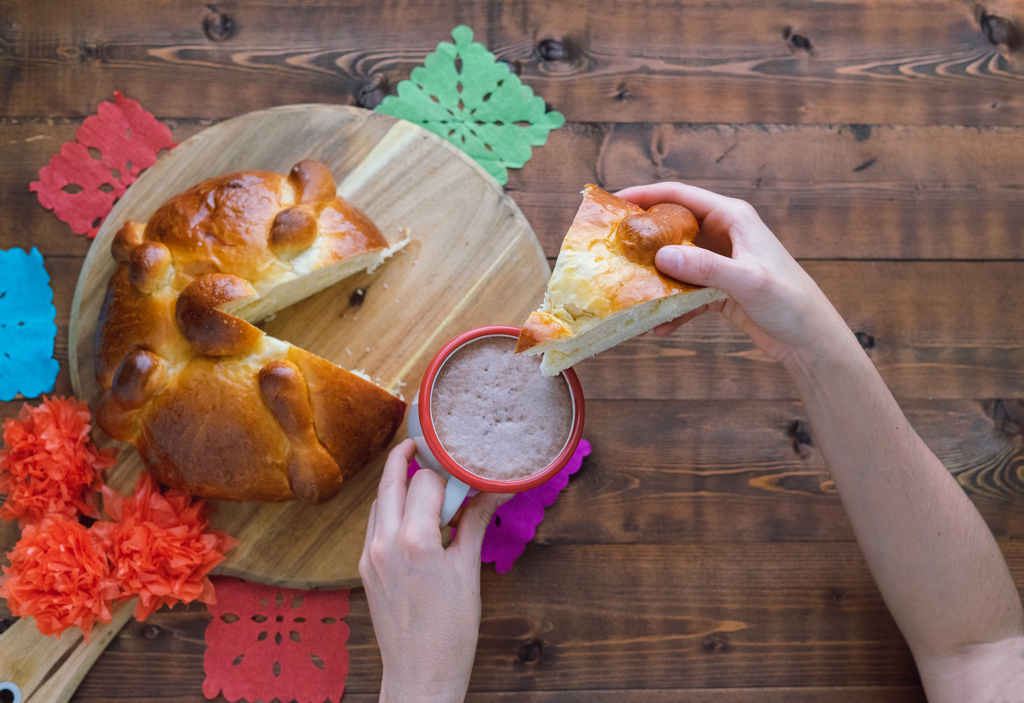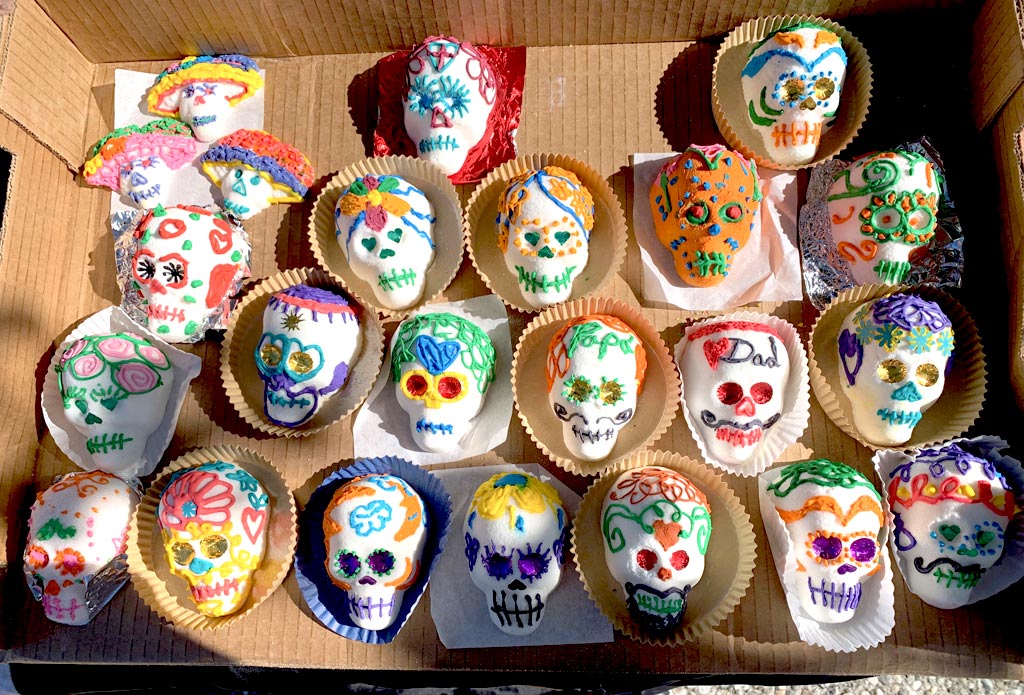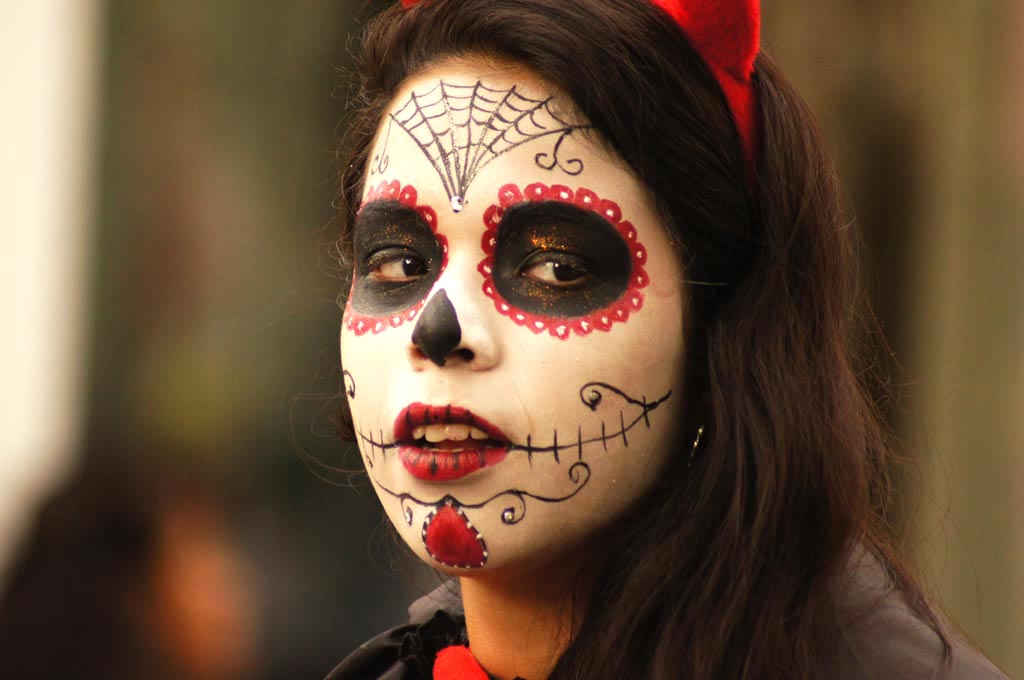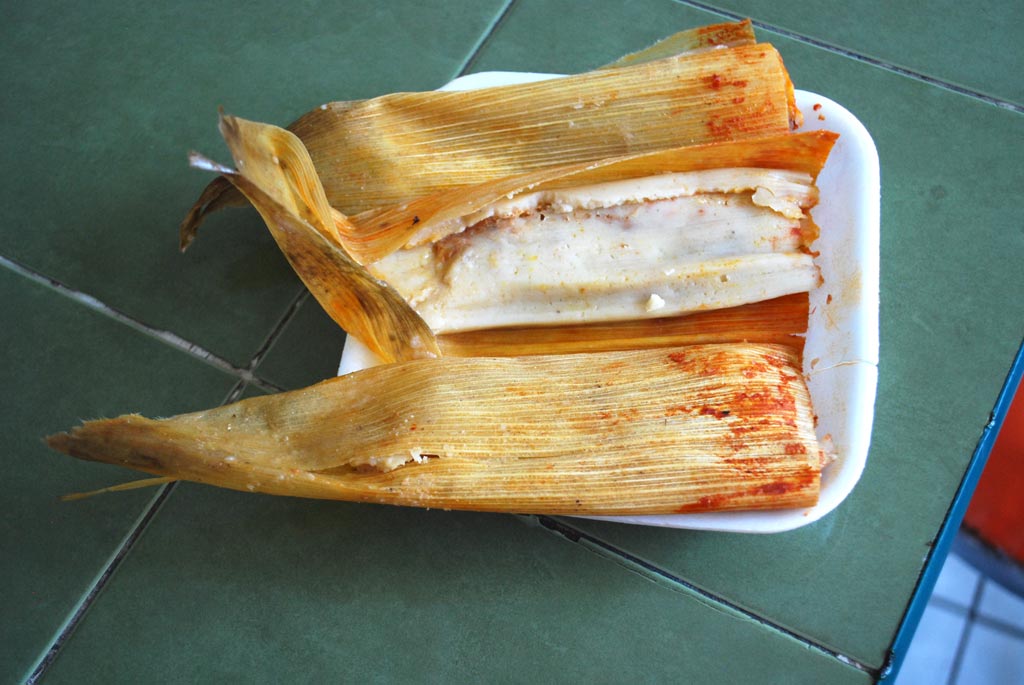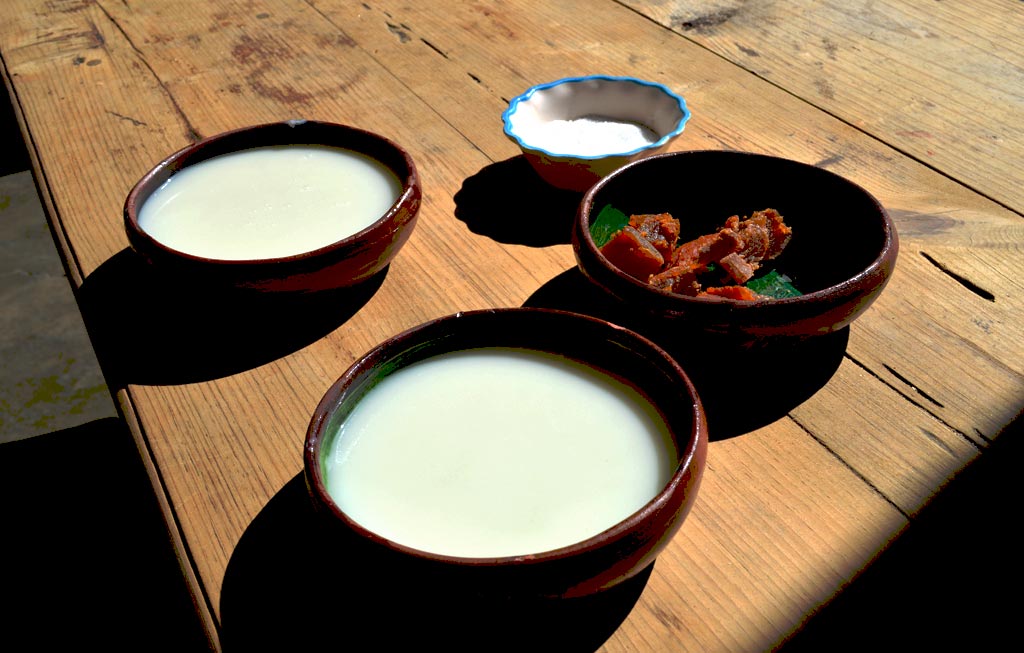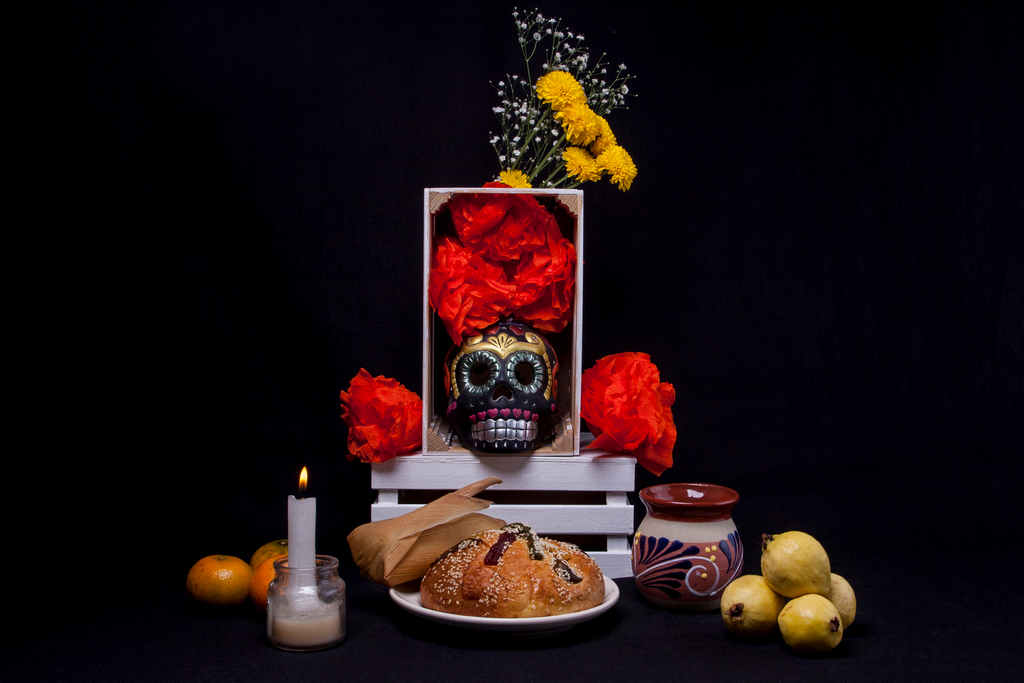El Dia de los Muertos (Day of the Dead) is an annual celebration that commemorates friends, family, and loved ones who have departed. This honored day is a mixture of Catholic and native Mesoamerican beliefs and customs, and the foods that are associated with the holiday, have been developed out of a combination of those different traditions.
But, hosting family gathering parties and cooking for groups – where foods are left out for long periods – leaves the door open for uninvited guests. While remembering the departed, don’t also invite in bacteria that can cause foodborne illness.
Background of El Dia de los Muertos
Prior to Spanish colonization in the 16th century, when the Aztecs had begun this tradition at the beginning of summer, they weren’t remembering loved ones who passed, but they were worshiping the queen of the underworld and protector of the dead – Mictecacihuatl.
- Learn about foodborne pathogens, cross contamination, cold and hot food safety, and best practices to prevent foodborne illness.
- Food Manager ANSI Certification: $99.00 - Valid in all States
- Food Handler Training: Only $7.00!
- 10% OFF: Enter Promo Code "train10off" at Checkout
The tradition gradually changed and is now associated with October 31, November 1, and November 2 to coincide with the Western Christian tradition of Allhallowtide: All Saints’ Eve, All Saints’ Day, and All Souls’ Day.
Despite that the name El Dia de los Muertos translating to Day of the Dead in English, the holiday is actually the celebration of life. It’s seen as a happy celebration where family members of all generations, deceased and alive, can be together as one.
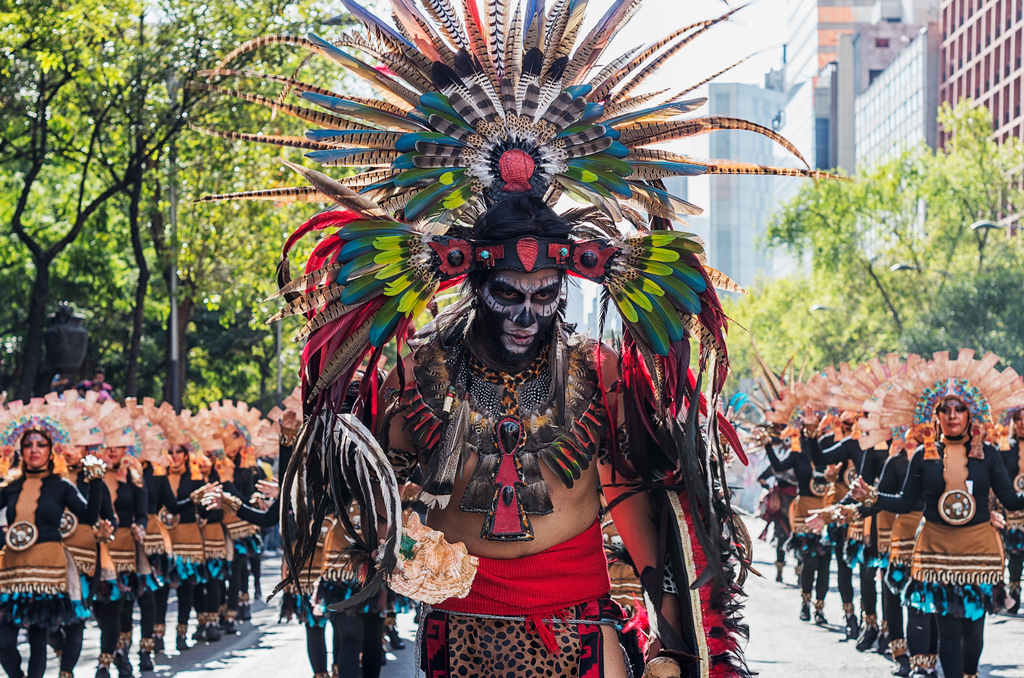 Image Source: Shutterstock
Image Source: Shutterstock The Ofrenda
Commonly, families spend time around the ofrenda (altar), praying and telling anecdotes about the deceased. This temporary altar is a way for families to honor their loved ones and provide them what they need on their journey. They place down pictures of the deceased, along with items that belonged to them and objects that serve as a reminder of their lives.
While the altar remains a common feature,the traditions and activities that take place in celebration are not universal and often varying from town to town.
The altar often includes the four elements: water, wind, earth and fire. Water is left in a pitcher so the spirits can quench their thirst. Papel picado (traditional paper banners) represent the wind. Earth is represented by food, especially bread. Candles arepresnt fire and are left in the form of a cross to represent the cardinal directions, so the spirits can find their way to visit the land of the living.
Marigolds and Monarchs
The flower of the dead is called Cempasúchil (Náhuatl, or Aztec, name for marigold). Cempasúchil was the symbolic flower of death for the Aztecs, because once it is cut, it dies very quickly. The cempasúchil is often placed on ofrendas and around graves. With their strong scent and vibrant color the petals are used to make a path that directs the spirits.
Monarch butterflies also play an important role in Día de los Muertos. They represent the spirits of the ancestors that come back to visit, which coincides with the arrival of the monarch butterfly to their wintering site in Mexico.
Traditional Foods of Día de los Muertos Celebrations
Food is a vital component to Día de los Muertos and there are a few particular foods that are traditionally associated with the Day of the Dead season in Mexico. During Day of the Dead festivities, food is both eaten by living people and given to the spirits of their departed ancestors as ofrendas (“offerings”).
Pan de Muertos – Day of the Dead Bread
Pan de Muerto is the bread that is prepared and eaten during the Day of the Dead season. It is an essential element of the altar and the food item which is most closely associated with the day.
This common food item is roundish (but it also shaped into people, animals, bones, and skulls), slightly sweet flavored with anise or citrus, decorated with shapes on top which are suggestive of bones, and sprinkled with sugar or sesame seeds. The bread is said to represent the deceased.
Calaveras de Azucar – Sugar Skulls
The tradition of sugar skulls represents a departed soul, which has the name on the forehead and is placed on the ofrenda (home altar) or gravestone to honor the spirit.
They are usually created with cane sugar and are elaborately decorated with items such as colored foil, icing, beads, and feathers. Traditionally made sugar skulls are considered folk art and are not meant to be consumed.
Catrina Makeup
La Catrina has come to symbolize El Día de los Muertos. La Catrina’s modern look was conceptualized by lithographer and printer José Guadalupe Posada, who designed the first La Catrina skull in the early 1900s to symbolize that death does not discriminate against anyone, regardless of class.
Dressing as a “Catrina” is a popular costume and Catrina makeup, also known as “sugar skull” makeup, face painting a skull with ornate elements, is a popular element of the celebration.
Tamales
Tamales are another staple of Dia de los Muertos celebrations. It is a ritual gathering of family, around which the family prepares the tamales together for ofrenda. There are many types of tamales, sweet (pineapple-cinnamon jellies) or fillings such as beef, pork, chicken, or cheese.
Mole
Tamales are complimented with a mole, a complex sauce of many ingredients (chilies, nuts, spices and chocolate) – many of which are toasted and then they are ground together. There are many different kinds of mole, but this dish is traditionally reserved for special occasions because of the labor and time-intensive preparation.
Calabaza en Tacha – Candied Pumpkin
Calabaza is the Spanish word for pumpkin and squash. A calabaza (butternut squash or sugar pumpkin) cooked in brown sugar cane syrup is a recipe dates back to pre-Hispanic times in Mexico. The calabaza is served warm, or at room temperature drizzled with syrup and served with milk or ice cream.
Fruit
There are a few different types of fruit that are associated with Day of the Dead. Nisperos (or loquats) are a fruit that originated in Asia but have become popular in Mexico. Some other fruits include oranges, bananas, and tejocotes (hawthorn).
Drink
In addition to food, drink is also important to the tradition of Day of the Dead. Historically, the main alcoholic drink was pulque while today families will commonly drink the favorite beverage of their deceased ancestors
Temperature Danger Zone & Two Hour Rule
Leaving food out too long at room temperature can cause bacteria to grow to dangerous levels that can cause illness. Bacteria grow most rapidly in the range of temperatures between 40°F and 140°F, doubling in number in as little as 20 minutes. This range of temperatures is called the “Danger Zone”.
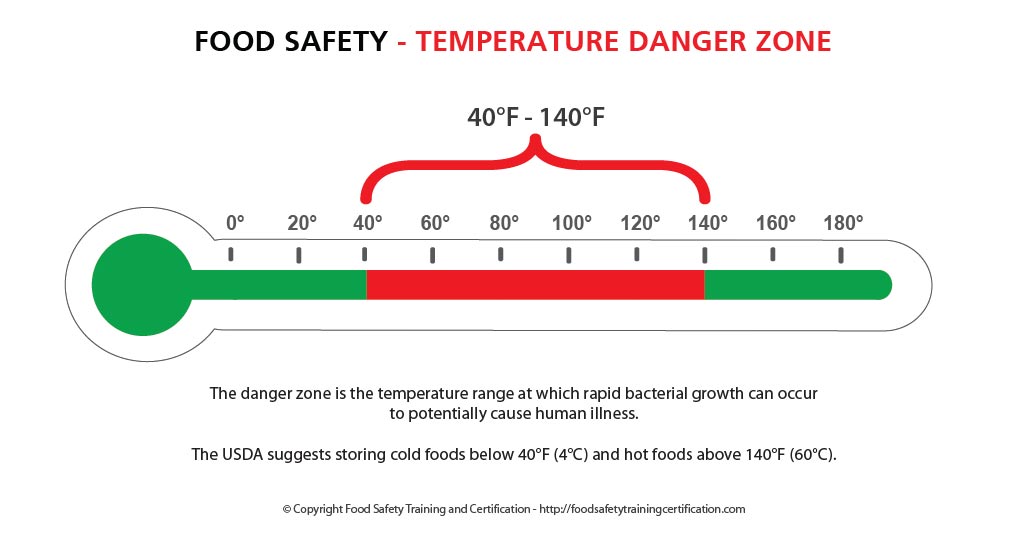
Track the time that perishable food stays out at room temperature. Refrigerate any high risk foods that have been out at room temperature for 2 hours or more.

Cooking for Groups
By following four simple steps, you can protect your families and friends and keep your food safe.
- Clean—Wash hands and surfaces often.
- Separate—Separate raw meats from other foods.
- Cook—Cook to the right temperature.
- Chill—Refrigerate food promptly.
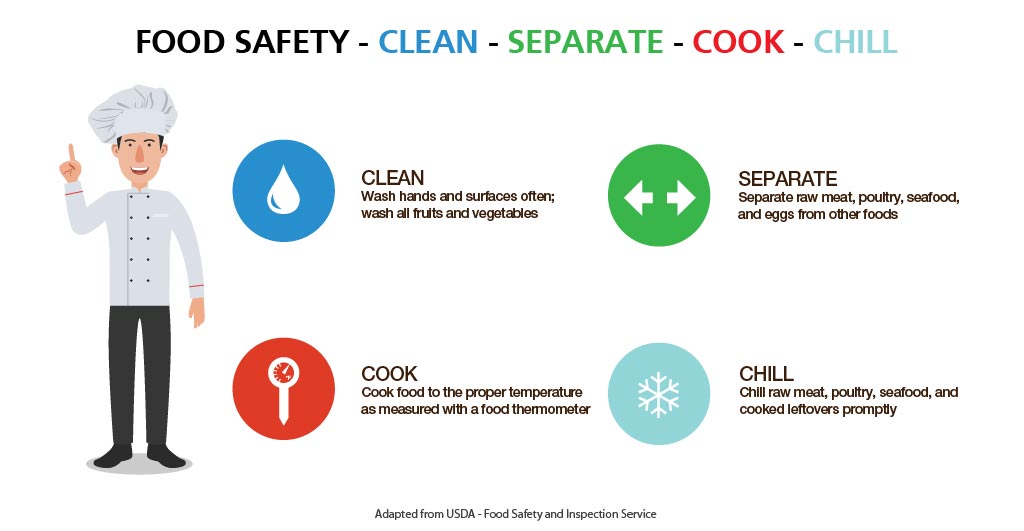
Chart: Safe Minimum Cooking Temperatures
Refer to the Safe Minimum Cooking Temperatures chart below for the proper cooking temperatures to ensure that bacteria are killed.
| Category | Food | Temp (°F) | Rest Time |
|---|---|---|---|
| Ground Meat & Meat Mixtures | Beef, Pork, Veal, Lamb | 160 | None |
| Turkey, Chicken | 165 | None | |
| Fresh Beef, Veal, Lamb | Steaks, roasts, chops | 145 | 3 minutes |
| Poultry | Chicken & Turkey, whole | 165 | None |
| Poultry breasts, roasts | 165 | None | |
| Poultry thighs, legs, wings | 165 | None | |
| Duck & Goose | 165 | None | |
| Stuffing (cooked alone or in bird) | 165 | None | |
| Pork and Ham | Fresh pork | 145 | 3 minutes |
| Fresh ham (raw) | 145 | 3 minutes | |
| Precooked ham (to reheat) | 140 | None | |
| Eggs & Egg Dishes | Eggs | Cook until yolks and white are firm |
None |
| Egg dishes | 160 | None | |
| Leftovers & Casseroles | Leftovers | 165 | None |
| Casseroles | 165 | None | |
| Seafood | Fin Fish | 145 or cook until flesh is opaque and separates easily with a fork. | None |
| Shrimp, lobster, and crabs | Cook until flesh is pearly and opaque. | None | |
| Clams, oysters, and mussels | Cook until shells open during cooking. | None | |
| Scallops | Cook until flesh is milky white or opaque and firm. | None |
Summary
Hosting a El Dia de los Muertos (Day of the Dead) party and cooking for groups – where foods are left out for long periods – leaves the door open for uninvited guests. While remembering the departed, don’t also invite in bacteria that can cause foodborne illness.
References
Wikipedia contributors. (2019, October 23). Day of the Dead. In Wikipedia, The Free Encyclopedia. Retrieved 22:01, October 27, 2019, from https://en.wikipedia.org/w/index.php?title=Day_of_the_Dead&oldid=922712490
Figure 3 – Media Credit: Wikimedia Commons
File: Detalle de una ofrenda de día de muertos, México.jpg. (2019, February 28). Wikimedia Commons, the free media repository. Retrieved October 28, 2019 from https://commons.wikimedia.org/w/index.php?title=File:Detalle_de_una_ofrenda_de_d%C3%ADa_de_muertos,_M%C3%A9xico.jpg&oldid=341022453.
Figure 4 – Media Credit: Wikimedia Commons
File: Marigold covered arch, Day of the Dead.jpeg. (2018, May 20). Wikimedia Commons, the free media repository. Retrieved 14:14, October 28, 2019 from https://commons.wikimedia.org/w/index.php?title=File:Marigold_covered_arch,_Day_of_the_Dead.jpeg&oldid=302250636.
Figure 6 – Media Credit: Wikimedia Commons
File: Day Of The Dead Sugar Skulls.jpeg. (2019, October 25). Wikimedia Commons, the free media repository. Retrieved October 28, 2019 from https://commons.wikimedia.org/w/index.php?title=File:Day_Of_The_Dead_Sugar_Skulls.jpeg&oldid=371828860.
Figure 7 – Media Credit: Wikimedia Commons
File: FeriaCartoneria29.JPG. (2019, July 24). Wikimedia Commons, the free media repository. Retrieved October 28, 2019 from https://commons.wikimedia.org/w/index.php?title=File:FeriaCartoneria29.JPG&oldid=359313295.
Figure 8 – Media Credit: Wikimedia Commons
File: DurangoTamal002.jpg. (2018, October 21). Wikimedia Commons, the free media repository. Retrieved 13:58, October 28, 2019 from https://commons.wikimedia.org/w/index.php?title=File:DurangoTamal002.jpg&oldid=324848230.
Figure 9 – Media Credit: Wikimedia Commons
File: ChickRedMole.JPG. (2014, July 14). Wikimedia Commons, the free media repository. Retrieved 13:50, October 28, 2019 from https://commons.wikimedia.org/w/index.php?title=File:ChickRedMole.JPG&oldid=128941157.
Figure 10 – Media Credit: Wikimedia Commons
File:PatzcuaroLakeArea001.jpg. (2018, October 22). Wikimedia Commons, the free media repository. Retrieved October 28, 2019 from https://commons.wikimedia.org/w/index.php?title=File:PatzcuaroLakeArea001.jpg&oldid=324963302.


